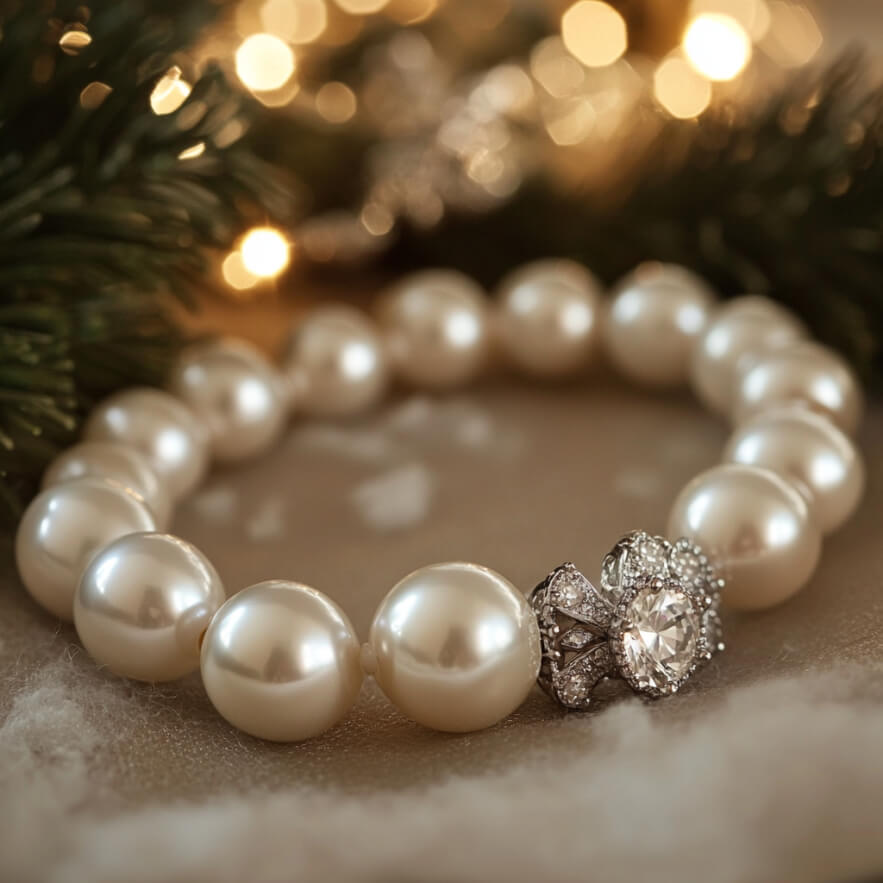Every accessory tells a story, but some speak louder than others. The materials used in wedding jewelry don’t just affect how it looks—they shape how it feels, how it moves, and how it connects to memory. A diamond may shine, but a recycled pearl from your grandmother’s necklace whispers a legacy. A polished silver ring might look perfect, but a hand-forged brass cuff holds the warmth of touch. When a bride or her bridal party wears jewelry made from thoughtful, soulful materials, the entire look becomes something more: a ritual, a symbol, a piece of living memory.
Why raw textures create emotional depth
There’s a quiet power in imperfection. Smooth, machine-cut jewelry might catch the light, but raw textures catch emotion. Hammered metal, unpolished stone, hand-carved wood—these surfaces feel closer to life. They bear the trace of a maker’s hand, the natural flaws of the earth, the quiet resistance of something that wasn’t mass-produced. Jewelry with texture tells us, “This was made, not manufactured.”
For weddings, these materials help soften the overly polished aesthetic that sometimes feels sterile. Brushed silver, oxidized copper, matte gold, woven fibers, clay elements—these choices create warmth. They work especially well in outdoor, intimate, or minimalist ceremonies, where the emphasis is on connection over spectacle. When someone runs their finger across a ring and feels the tiny ridges, they’re reminded: this wasn’t just chosen, it was considered.
Natural materials and sustainable storytelling
Eco-conscious brides aren’t just choosing green for trend’s sake. They’re seeking authenticity. Jewelry made from sustainable or reclaimed materials carries with it a sense of purpose. A necklace created from recycled gold. A bracelet braided with hand-dyed hemp. A pair of earrings carved from driftwood or vegetable ivory. These choices reflect the idea that beauty doesn’t have to cost the planet.Beyond the ethical value, sustainable materials are often more tactile, rare, symbolic, and historically rich. Take tagua nut (also known as plant ivory)—used for centuries in South American jewelry. Or consider sea glass, tumbled for decades in ocean tides. Each piece has lived a journey before it reaches the skin. Wearing it isn’t just a fashion statement—it’s a quiet commitment to values, to legacy, to earth.
The emotional pull of reclaimed and vintage components
Nothing holds soul like something that has lived before. Reclaimed jewelry components—vintage clasps, old chains, antique gemstones—carry a charge that new materials can’t replicate. Maybe it’s the fact that someone else once loved them. Maybe it’s the idea that they’ve survived decades of change. Whatever it is, vintage pieces hum with memory.
When brides choose to wear jewelry made from vintage elements, they’re participating in a cycle. They’re not just taking; they’re continuing. Designers like Erica Weiner, Wwake, and countless artisans on Etsy specialize in reimagining antique finds into modern settings. A 1930s brooch becomes the centerpiece of a minimalist pendant. A Victorian ring is paired with a raw silk ribbon. These moments of contrast make for deeply layered beauty.
Local and handmade: finding soul in small-scale craftsmanship
Mass production often strips jewelry of personality. But handmade pieces—especially those sourced locally—carry the fingerprints of real people. These aren’t just adornments; they are acts of care. Makers who source their own materials, melt their own metals, or shape their own beads aren’t just artisans—they’re storytellers. Buying from them means becoming part of that story.Local materials also ground your wedding in place. Using copper mined in your region, wood from local trees, clay from your own soil—these details create a sense of rootedness. They honor the land, the people, and the traditions that surround your ceremony. Whether you’re buying from a village in Italy or a craft studio in your hometown, the material becomes more than a medium—it becomes a message.
Combining soft and hard: emotional tension in material contrasts
There’s something magnetic about the meeting of opposites. Pairing hard and soft materials creates visual interest—and emotional tension. A leather strap paired with polished crystal. A rough-cut quartz set against silk. A pearl drop suspended on knotted rope. These combinations reflect the complexity of relationships: strength and vulnerability, shine and stillness, edge and tenderness.
Brides who understand texture often experiment with contrasts in weight, sound, feel, and temperature. A piece of jewelry that jingles softly as you move. A choker that warms with your skin. A bracelet that scratches ever so slightly against your sleeve. These aren’t flaws. They’re reminders of being alive—of choosing something that moves, breathes, and responds to the body, not just rests on it.
Meaning over polish: how materials shape memory
Not every wedding needs diamonds. Not every emotion can be expressed through gold. Sometimes, the most powerful accessory is the one that makes you feel. Jewelry made from materials with soul often becomes the most worn after the wedding—because it connects. A strand of hand-rolled ceramic beads. A ring carved from wood. A pendant pressed from an antique button. These are not just beautiful; they’re resonant.
The sensory qualities of materials create memory. The smell of leather, the coolness of stone, the sound of wood beads knocking together—these impressions stay in the mind long after the music stops. Choosing jewelry based on how it makes you feel, rather than how much it shines, is not about simplicity. It’s about substance. It’s about choosing pieces that you can return to, years later, and still feel something.
They add emotional depth, uniqueness, and tactile richness—making pieces feel hand-touched and intentionally crafted.
Recycled gold, sea glass, tagua nut, vintage gems, hemp, reclaimed wood, oxidized metals—all chosen for meaning and ethical value
bsolutely. Their emotional value and artisan quality make them perfect for both minimalist and high-end aesthetics when styled thoughtfully.

